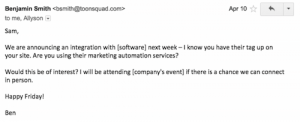By Vlad Bodi, Published November 12, 2014
It’s no secret that once you’ve succeeded in one market, opening new markets does not simply mean replicating the model you’ve perfected for your current business. Expanding in new markets is expensive, therefore before investing time and money it is important to consider the options.

Over the past years your business grew and with time, your efforts started paying off. Managing profitability, growth, production and growing customer base was a challenge, and so is taking your product or service in a new market.
What basic things you should consider?
Let’s start with the beginning and look into what are the main things you should take into account when expanding your business into new markets.
Define and select a market
Begin by establishing criteria a new market should meet in order to consider it for expansion. Look at what characteristics it should have – review everything from geographical location, potential customer characteristics, size, how developed or sophisticated it is. Don’t miss anything as this will serve as an input for the selection.
Perform market analysis
Gather information about the selected market and compare the findings with the defined criteria. The best way to do this is use existing market research and combine with available online data. You should now have a picture of the attractiveness and dynamics, as well as what challenges you might face when starting operations.
Check entry barriers
Analyze what are potential barriers to entry. There are a series of factors that could affect your expansion; you should look into governmental policies, especially important for technology based businesses, product differentiation, access to distribution or how costly it is for a customer to switch between suppliers. The internet has helped at reducing the barriers to entry, but did not remove them.
Review local nuances
Pay attention to the less tangible items that can make the difference between success and failure: cultural traits in doing business. Although you will certainly find reviews of how to do business in a specific country, you should learn about how customers perceive certain products, does your name mean something else in your new market, do they mainly do business in local language, etc.
Check competition
Research the existing competition and learn everything you can from number of competitors, their products, strategies (what can be learned, of course), pricing policy and online presence.
Setup partners and channels
How will you place the product into the market and what strategic partnerships you need in order to succeed? Identify the channels that best serve your interests in order to reach your potential clients. Will you address them directly or associate with an existing business? Will the customer be able to access your product online or through points of sale? Your existing business model and achieved successes should help you define that.
Develop market entry plan
A market entry plan will take all the knowledge you gathered and structure it. How will you position your product or service? What about segmenting the market? What pricing policy will you adopt? Write things down and make sure you are aware about each step.
Can Inbound Marketing be used for any of the steps?
Inbound is great for developing a long term and sustainable marketing strategy, but we wanted more. Our goal was a simple and sustainable way to use the same marketing techniques in the first stages of market research. Within the next blog series, we will go in depth to show you how inbound marketing can be used in market expansion.
How Inbound is currently used
Preparing the internal engines for scaling your business is a project that goes beyond the borders of marketing, though ensuring internal communication is important. The basic approach to understand and validate a market is hiring a local company for advise, doing online and offline market research studies, spending in brand awareness, managing calls and emails to potential partners and attending trade shows focused on the region or industry.
Once these steps are done, you can successfully use Inbound to enter the market and:
- attract people to your product / service
- convert them into qualified leads
- close leads into sales
- and maintain customer loyalty
The twist
But inbound marketing can be applied also for many of those initial steps that are so time consuming. Evaluating the market, exploring the challenges, learning about the client requirements in the new market are all achievable. Even more, it can be used not only for assessing and generating sales leads, but also build interest in a partner and re-seller channel.
While conducting a proper research to learn about the target market should not be completely discarded, Inbound Marketing, though not the most obvious choice for research and evaluation, can deliver great results both in the planning as well as in the execution phases of your market expansion.
Business Articles | Business 2 Community
(326)









